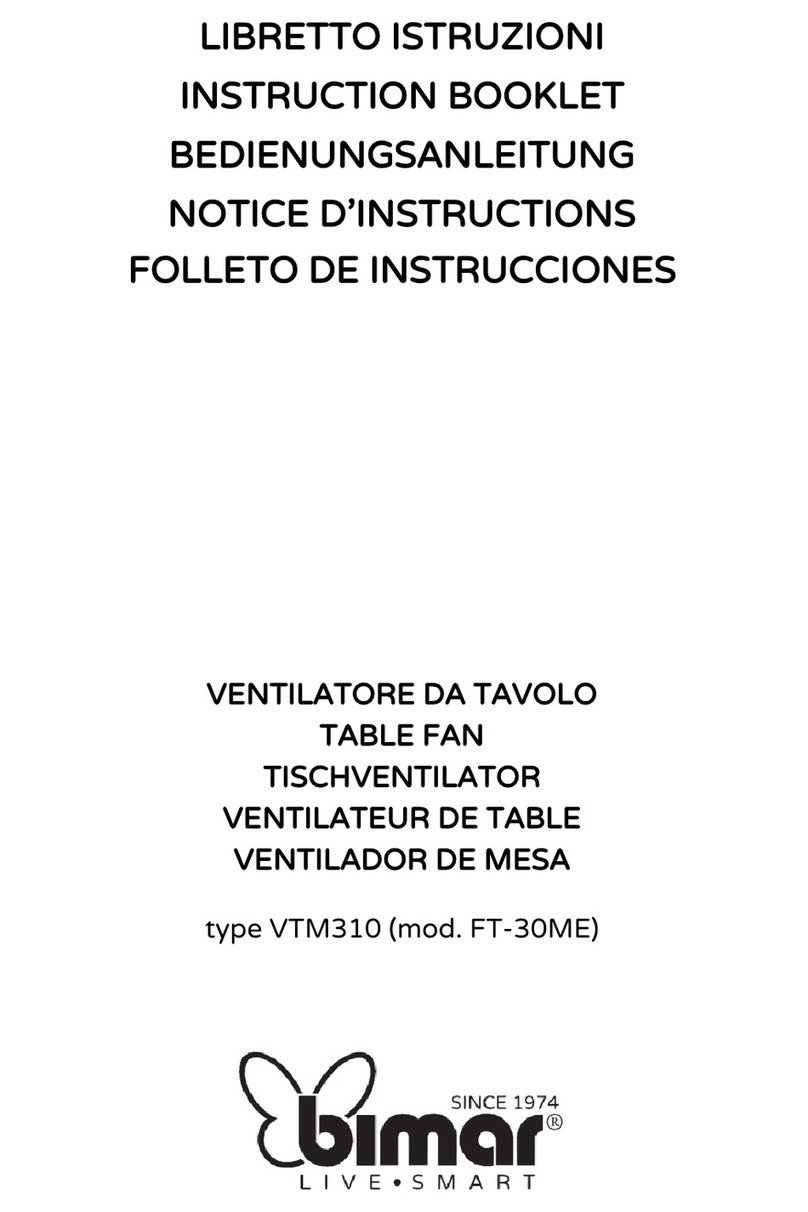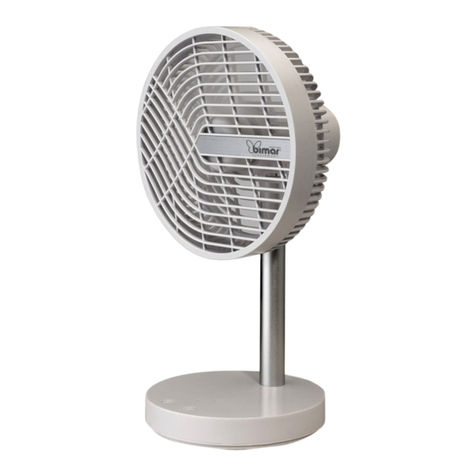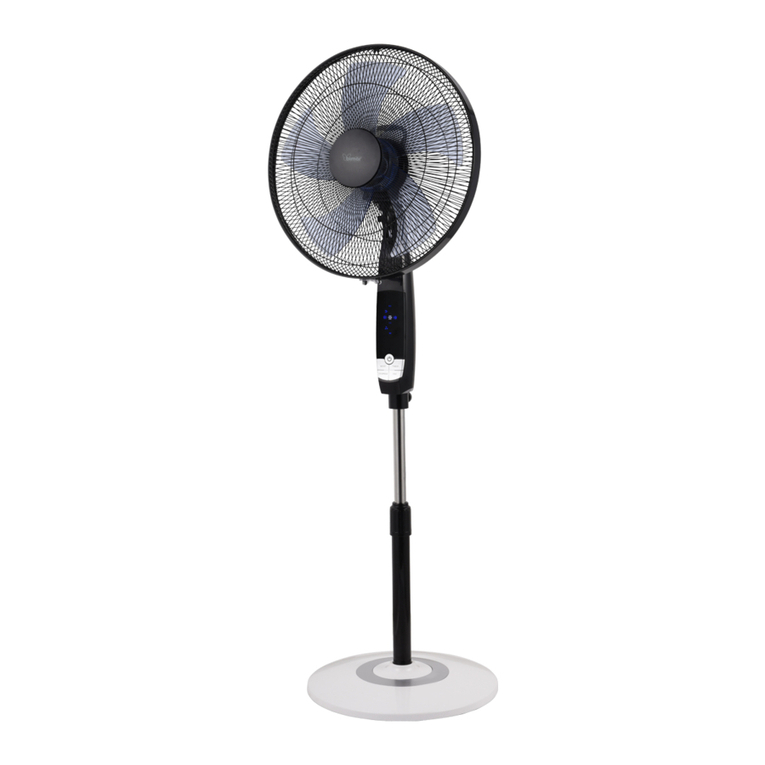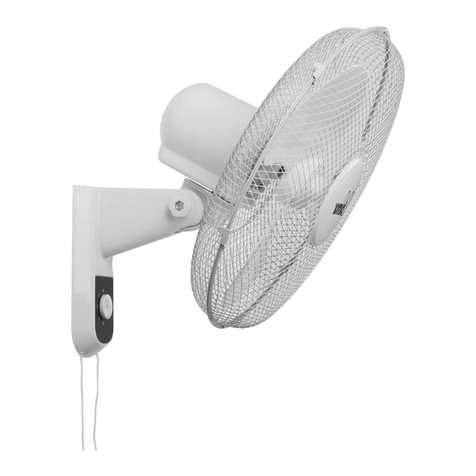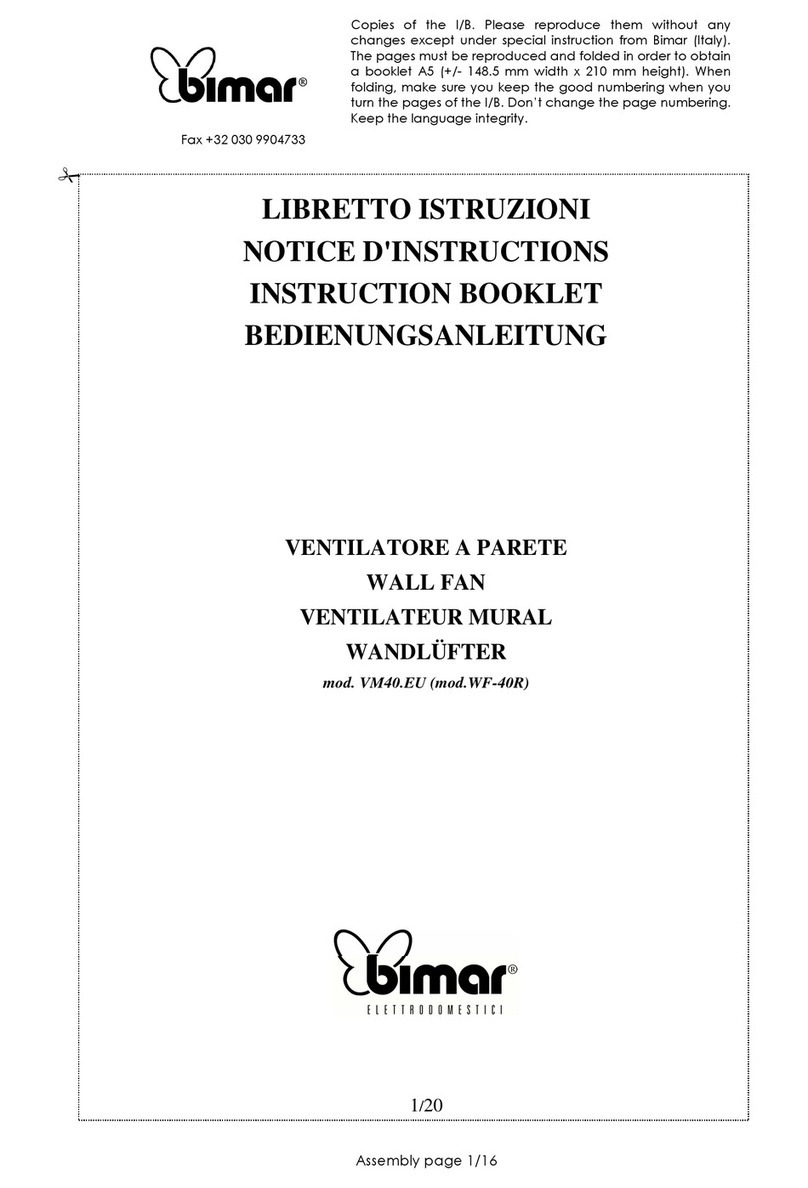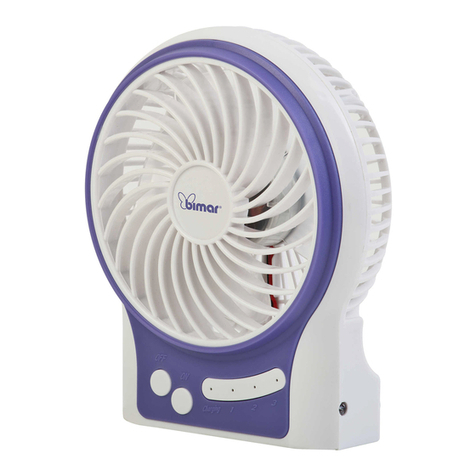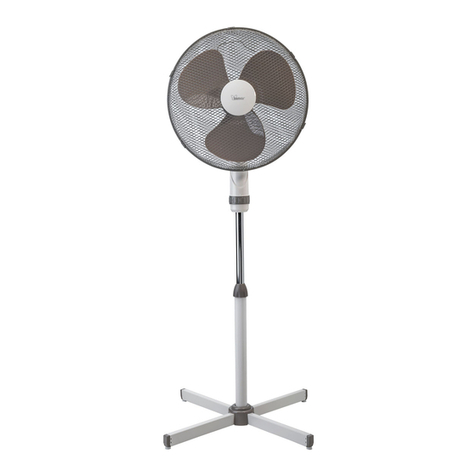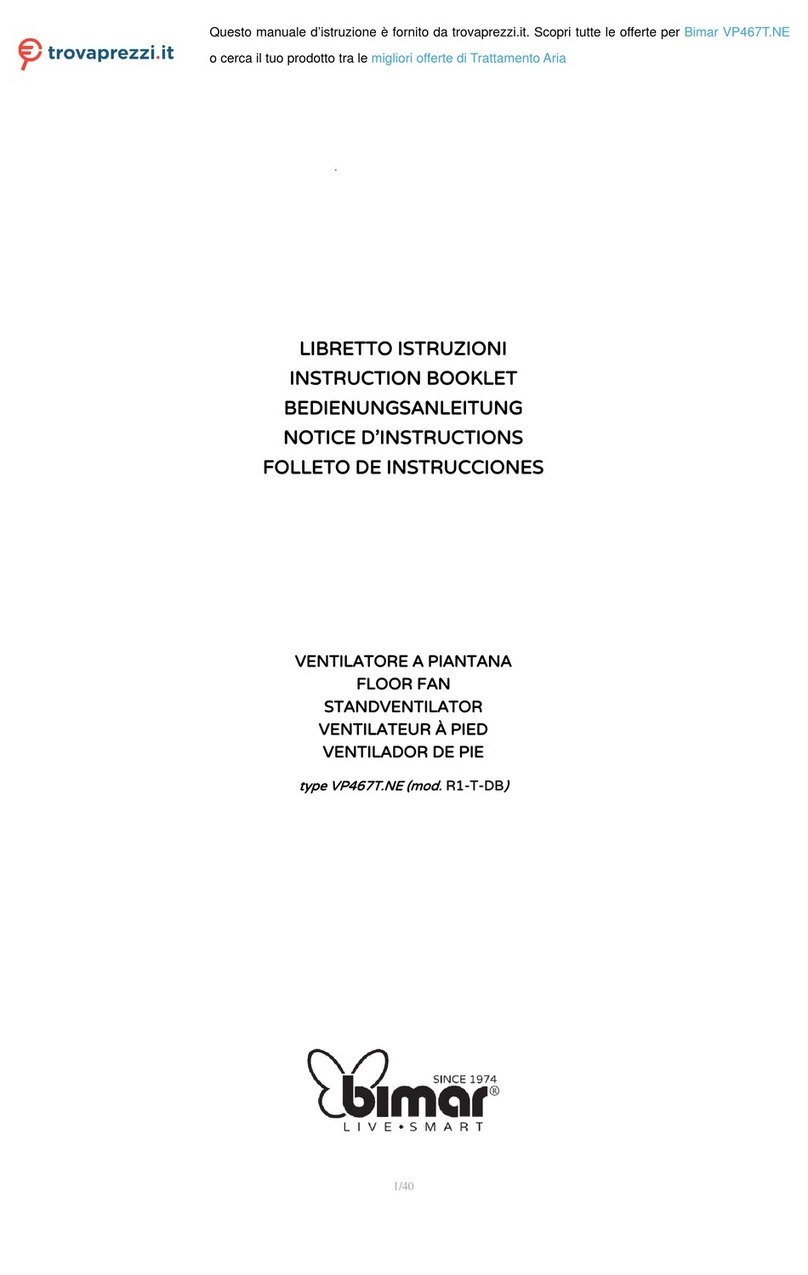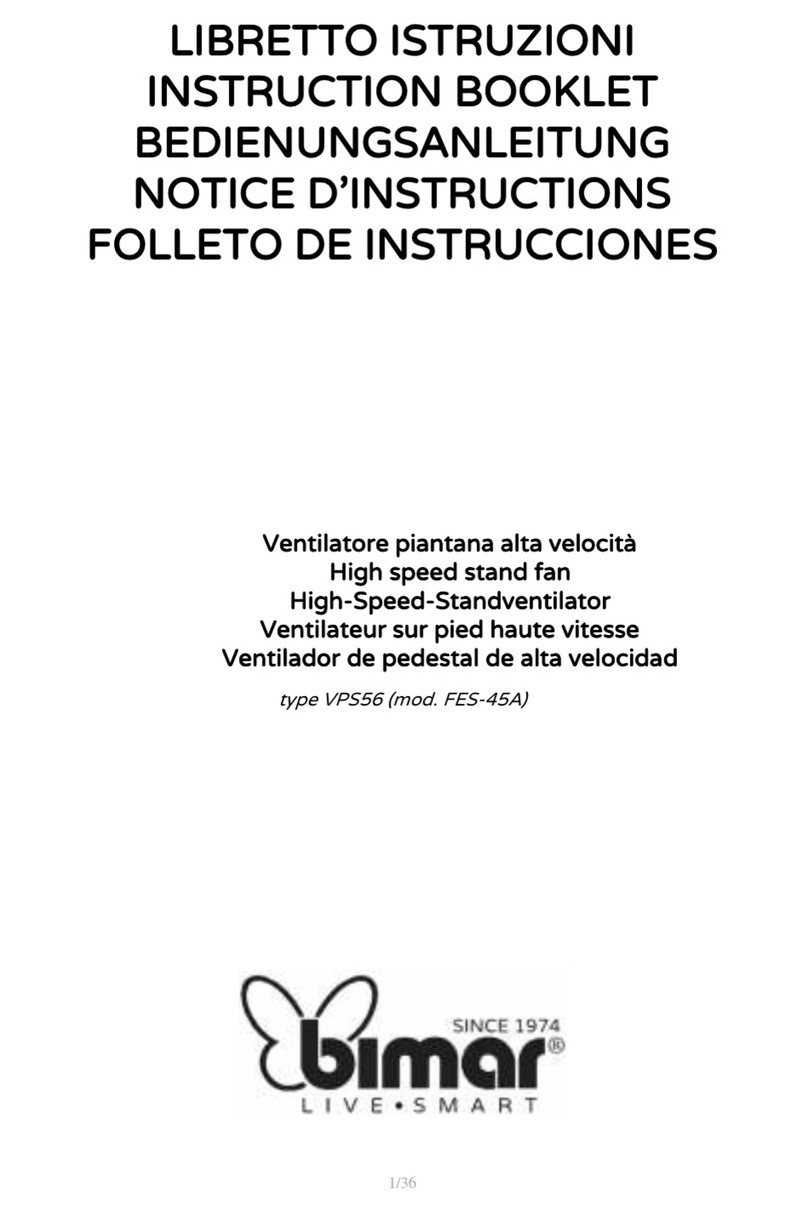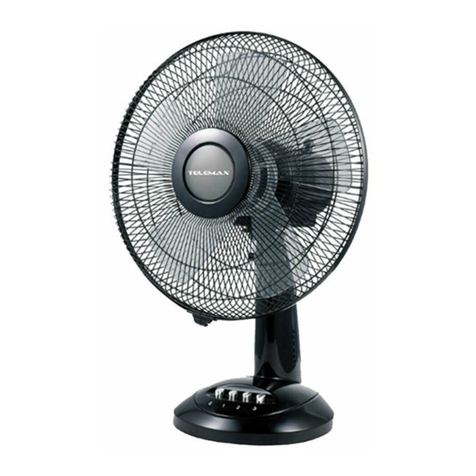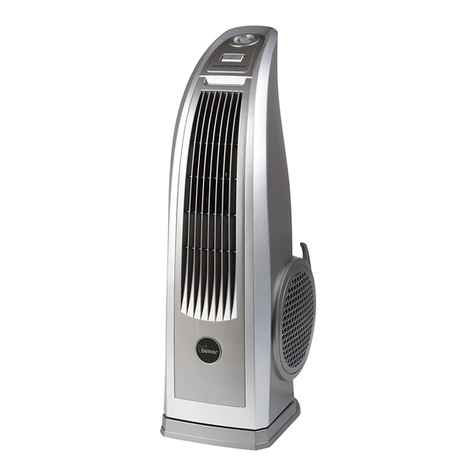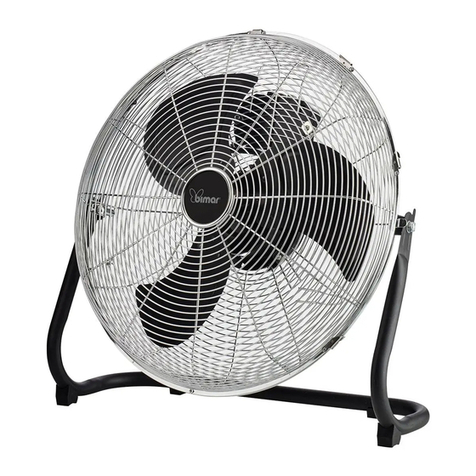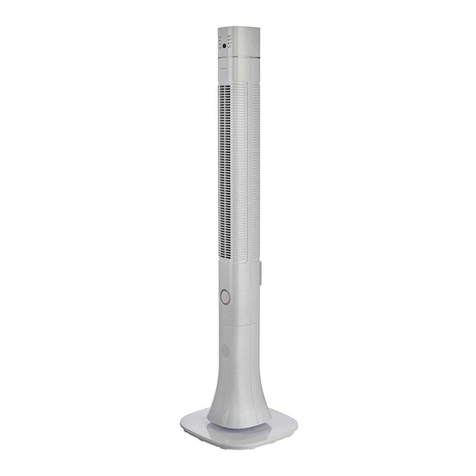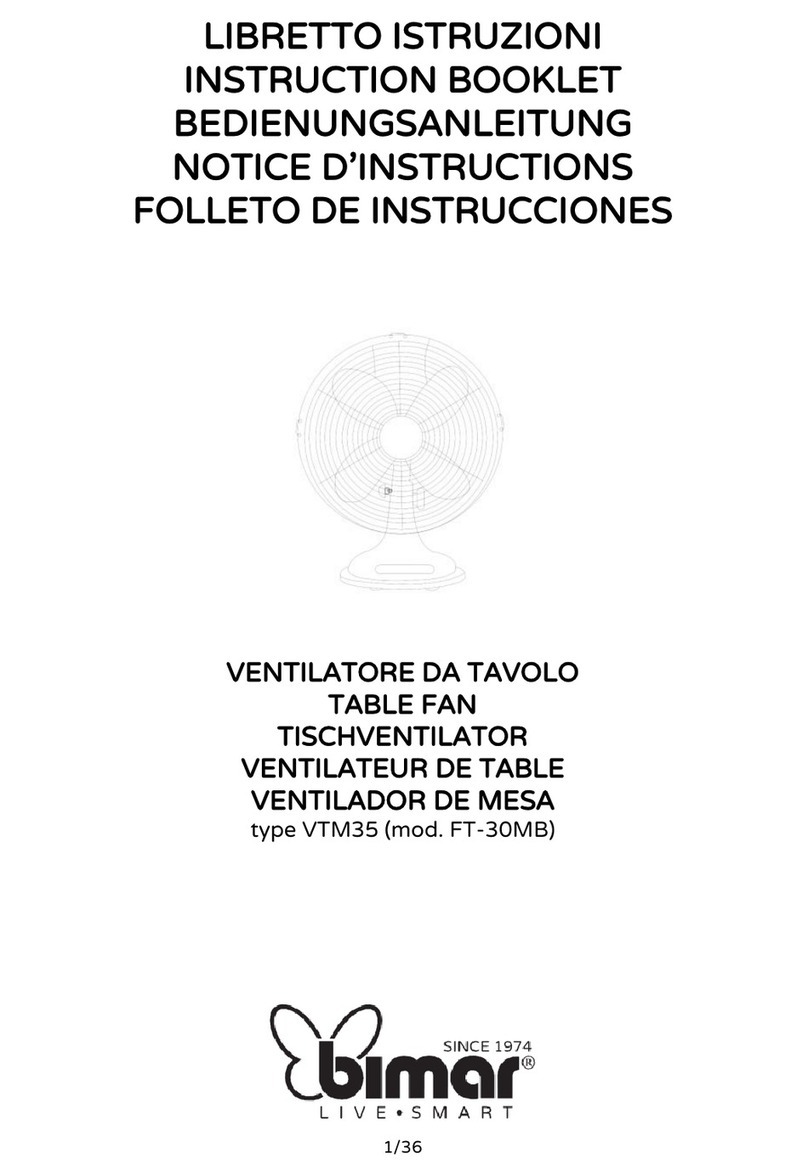
Fax +32 030 9904733
Copies of the I/B. Please reproduce them ithout any
changes except under special instruction from Bimar (Italy).
The pages must be reproduced and folded in order to obtain
a booklet A5 (+/- 148.5 mm idth x 210 mm height). When
folding, make sure you keep the good numbering hen you
turn the pages of the I/B. Don’t change the page numbering.
Keep the language integrity.
9
/
32
Assembly page 9/24
INSTALLATION
•After removing the packing materials, check the integrity of the appliance; if you are unsure, do not use
it and ask for qualified professional help. The packing materials (plastic bags, polystyrene foam, nails,
etc.) must be kept out the reach of children because they are potential sources of danger. Attention:
any stickers or advertising material applied to the grid removed before using the appliance. The
manufacturer declines all responsibility in case this is not safe working practices will be respected.
•Before connecting the appliance, check that the voltage values shown on the data plate (220-240V~
50Hz) correspond to those of the electricity supply network, and that the electric plug is grounded. In
the event of incompatibility between the electric outlet and the plug of the heater, have the outlet
replaced with another more suitable type by professionally qualified personnel, who will make sure that
the section of the wires of the outlet is appropriate for the absorbed power of the heater. In general, the
use of adapters or extension cords is not recommended; if their use is indispensable, they must conform
to existing safety standards and their current capacity (amperes) must not be less that the maximum of
the appliance.
•The power socket must be easy to reach so the plug can be removed quickly in case of emergency.
•To not place the appliance near sinks or other container of liquids (minimum distance of 2 meters) to
avoid the risk of it falling in.
•Do not place the appliance near an open flame, cooking or other heating appliance.
•Keep the fan far away from fabrics (curtains, etc.) or unstable materials that could obstruct the air
intake grille; make sure that the front is free of unstable materials (dust, etc.).
•The appliance requires no installation, i.e., the preparation of electrical and water connections,
fastening or anything else, for its use.
•Make sure that the electric cord is not touching rough, hot or moving surfaces and not twisted or
wrapped around the appliance.
•Do not use the appliance with a timer or a programmer or with a system that can switch on the
appliance automatically, to avoid risk of fire, since a fire risk exists if the heater is covered or
positioned incorrectly.
•In the event of a breakdown or poor operation, turn the fan heater off and ask for professionally
qualified help: repairs made by unqualified persons can be dangerous and render void the warranty.
ASSEMBLY
Attention: always unplug the appliance before you assemble, and insert the water inside the tank.
The package contains:
- main unit (19) 1 piece, tank (4) 1 piece, castors with brake (6) 2 pieces and pivoting wheels (7) 2 pieces,
remote control (3) 1 piece, gel ice "blocks" (18) 2 pieces.
For assembly, refer to the pictures on pages 2 and 3 and proceed as follows:
•The main unit is inserted upside down in the tank: slide it in using the side handles (14): in case of
difficulty, check that the pins (13) are not hitting the inner edge of the tank.
•Place the main unit on a stable surface without rough spots to avoid scratching the control panel and
remove the water hose from its seat.
•Turn the tank upside down and insert the wheels into the holes on the bottom: the 2 wheels with brake
(6) must be inserted in the back and those without a brake (7) in the front. Insert the wheels by applying
pressure and check that all 4 are touching the floor.
•Make sure that the water drain plug (10) is securely fastened/screwed into its seat; fill the tank with
cool, clean water up to the maximum level indicated (word MAX (16)) printed on the tank. Use only
water, i.e., without any additives (aromas, essences or detergents). Do not fill above the maximum level
(16) or below the minimum level (17). Move the tank very carefully when filled with water and grip
the lower edges (21). The tank holds 20 litres and provides cooling for 55-60 hours.
•To cook the air more, insert the two ice bricks provided after leaving them in the freezer for about 12
hours.
•Insert the main unit above the tank and inside its edges (see the pictures), taking care to:
- handle the main unit with the 2 side handles.



